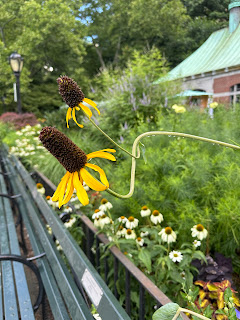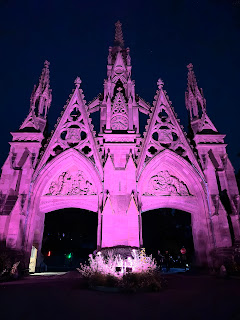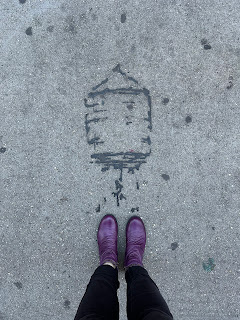In a little over a month, I will hit a milestone: ten years in New York City. I’ve been reflecting on how much I have changed in that time, and how much the city around me has changed over the last decade. We are both unrecognizable.
When I moved to Long Island City/Astoria, there was a single tall building in Queens Plaza – the former Citibank building. Now there are dozens of tall glass boxes, many sitting empty or at meager capacity, built in an upsurge of interest in the area when A*azon was planning to build their headquarters in the neighborhood, and left desolate after their reconsideration (a nice way of saying they were met with vehement vitriol from politicians and preservationists who understood the irreparable damage their residency would inflict on the working-class neighborhood they planned to occupy). The area around these towers has drastically changed since then: gone are the small manufacturing warehouses, now the streets are home to chain big-box stores and trendy groceries.
Ten years ago, I was a fresh suburban transplant trying to figure out how to live my life in a place that could not be more different than where I came from. The preservation and anti-gentrification consciousness came on slowly, but I knew from day one that I would never and could never expect the city to conform to me (why would I?), and I set out to learn everything I could about its history. It started with a fascination of the subway: how it was built, what areas it served, and how it changed the landscape of the city. Then came the dozens of neighborhood-specific, historical non-fiction books I devoured (and continue to), like
The Bowery by Stephen Paul Devillo,
The Village by John Strausbaugh,
St. Mark’s is Dead by Ada Calhoun,
Inside the Dream Palace by Sherill Tippins, and many more. I was fascinated by the stories of earlier versions of these places while at the same time mourning the loss of key parts of the city’s cultural history. Then came
Vanishing New York by Jeremiah Moss, and everything clicked into place. Here was someone deeply aware of the city’s politician’s and landlord’s megalomaniacal and unyielding commitment to hyper-gentrification, who was keeping a record of the losses (some of which I personally experienced), documenting not only the erasure of neighborhood staples but the erasure of neighborhood culture. Moss brought into focus for me how homogenized the city was becoming, and I’ve been watching it happen (powerlessly, furiously) in real time ever since.
In the same way that Eugene Atget documented Paris before it was forever changed, Berenice Abbott worked in the same spirit of preservation in New York. She began her photographic career as Man Ray’s studio assistant in Paris, became a photographer in her own right, met and photographed Eugene Atget, then acquired a large portion of his work after his death. She was the biggest promoter of Atget’s photography, making it available to the public, creating exhibitions. Inspired by Atget’s style and a visit to New York, Abbott spent six years working independently to document the city, then was hired by the Federal Art Project (FAP) in 1935, receiving funding to continue her Changing New York project through the end of the decade.
I attended
Berenice Abbott’s New York Album 1929 exhibit at the Met last year. I was infused with a rush of inspiration to continue documenting the city
the way I have been since 2016 and was frustrated that I was only then introduced to the work of an artist who’d always been in my periphery but that I had never looked further into. Here was someone who did what I’ve been doing, eighty years prior.
 |
| Middle East Side, Union Square West, Nos. 31-41 |
In my research of Abbott’s work, I found at least two examples of buildings or entire neighborhoods that were razed to make way for public housing projects. The Smith Houses in Two Bridges sits on what was once a bustling network of streets full of working-class families and businesses. My clue to this was the following photograph made on the corner of Oak and New Chambers Streets, both of which no longer exist. The entire neighborhood was razed in 1950-1953, erasing a part of the Lower East Side right off the map.
 |
| Lower East Side, Oak and New Chambers Street |
Less troubling, but no less a loss are the several images she made below and above the elevated train lines. The trestles were infamously filthy, loud, and a blight to the surrounding streets. This image made at 250 Pearl Street of the Second and Third Avenue El is striking due to the juxtaposition of the massive steel structure and the tiny silhouettes of two men on the street below.
 |
| Wall Street, "El," Second and Third Avenue Lines, 250 Pearl Street |
Abbott’s contribution to the world of documentary and street photography is irrefutable. Like Atget before her, Abbott made a record of a now-unrecognizable city, preserved evermore in silver gelatin.
We who are passionate about the preservation of this city are lucky to have such a thorough and detailed capsule of the 1930s.
 |
| Greenwich Village, Broome Street, Nos. 512-514 |















































